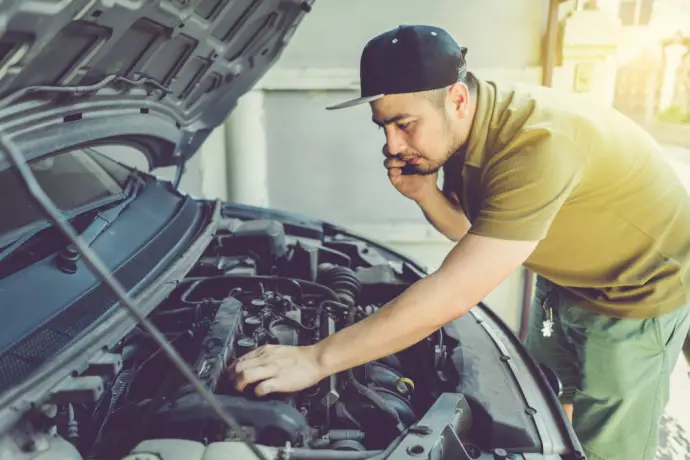Nearly every car owner who has had a car for any length of time has seen the dreaded “Check Engine” light on the dashboard. While the solution could be as simple as replacing a faulty gas cap for $25, in most cases needed repairs cost hundreds of dollars. One of the most common causes for the check engine light to go on is a failing catalytic converter. An OEM replacement can cost more than $1,300. Ouch.
While it’s not realistic to expect that repairs can always be avoided, proper maintenance can greatly reduce the likelihood of seeing that dreaded check engine light. Performing the following five maintenance items along with keeping up with other routine maintenance tasks can keep cars running smoothly and out of the repair shop.
Engine Oil and Air Filter
A clean engine is a smooth running engine. A car’s engine oil and air filter should be checked monthly to keep things in good running order under the hood.
The old rule of thumb that recommends oil changes every 3,000 miles is outdated. Newer cars have more efficient engines, so it’s generally OK to change the oil every 5,000 miles, or at least twice per year, whichever is more frequent. However, many variables can require more or less frequent oil changes, including whether a car is driven primarily in the city or on the highway, the car model and the type of oil used in the car.
Air filters trap contaminants that otherwise make their way into a car’s inner workings, and should be checked with each oil change. Hold the filter up to a strong light. If no light shines through, it’s time for a replacement.
Tire Pressure, Alignment and Tread
In the South, “Maypops” represents a brand of tire no one wants on their car. The term refers to worn tires that are so bald that they “may pop” at any moment. Humor aside, driving on misaligned, improperly inflated or worn tires can be extremely dangerous. Underinflated tires adversely affect handling and gas mileage, while overinflated tires reduce traction and increase the risk of rupture if the car hits a pothole. Regular tire rotation ensures that tire wear occurs evenly, while re-alignment improves gas mileage and helps cars handle better. Tire pressure checks and rotation can be done along with an oil change, or at least every month. Re-aligning tires is a more involved task and involves at least a short visit to a mechanic’s shop.
Transmission, Belts and Hoses
Modern transmissions are much easier to maintain than transmissions in older cars. Nonetheless, many manufacturers require that transmission fluids be changed every 35,000 miles, or even sooner if there is a brown tint to the fluid. On newer cars, transmission filters may only need to be changed every 100,000 miles — or never.
Failure of a car’s drive belt or hose can cause loss of power steering or make the car’s electrical charging or cooling systems inoperable. Drive belts and hoses should be adjusted if they’re noisy and replaced every two or three years. Some vehicles also have timing belts. Timing belts should be checked every 60,000 to 80.000 miles, and replaced if needed to avoid an expensive engine repair down the road.
Brake Pads and Fluids
It’s relatively easy to check a car’s brake pads; a large silver disk and outer pad are usually visible between the wheel spokes. The pad should be at least ¼ inch thick, but thicker is better. Worn rotors, pads and linings should be serviced or replaced. Many cars also have a brake fluid reservoir under the hood that indicates the amount of brake fluid. Dark fluid indicates possible breakdown. A car’s braking system should be checked at least twice per year, but more often for drivers that put heavy mileage on their cars.
Car Wash and Wax
On warm, sunny days, cars line up at car wash stations for washes and waxes, along with vacuuming interior upholstery and shining up the dashboard. But car washes should take place every week year round, as weather permits. Each wash should include fender wells as well as the undercarriage of the car. Especially during the winter, dirt and road salt can do a number to the underside of a car. A good rule of thumb for waxing is when water beads are larger than a quarter, it’s time for a new wax job.
Keeping Your Car Running Smoothly
The adage “penny wise and pound foolish” definitely applies to car owners tempted to skimp on essential maintenance. The money invested in upkeep of vital elements like brakes, transmission and tires can mean fewer instances where the check engine light goes on. For new car owners, many regular maintenance tasks are covered by manufacturer or dealer’s warranties. For used cars no longer under warranty, used car service contracts provide an additional measure of protection and driver peace of mind.

